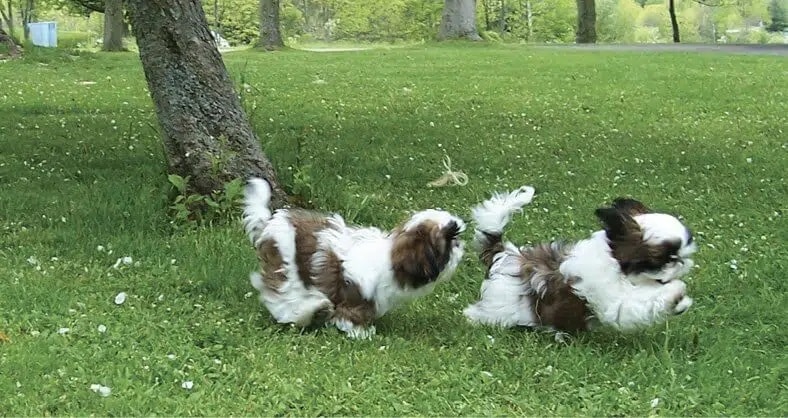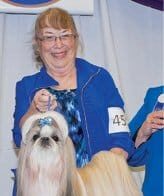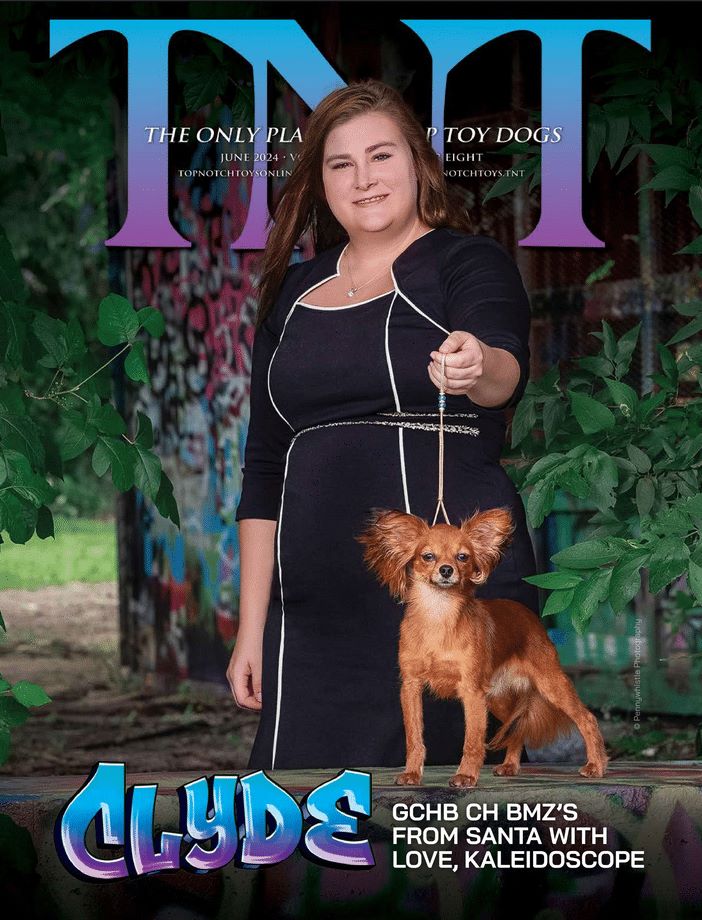The Wonderful Shih Tzu Dog Breed – What You Need to Know
The Shih Tzu is a “big dog in a little package.” In the United States, where the breed standard calls for a weight of 9 to 16 pounds, the Shih Tzu is classified as a Toy breed; however, in many other countries it is in the Non-Sporting or Utility Group. Whatever its size, a proper Shih Tzu should be sturdy and well-boned. If you pick it up, it is likely to be deceptively heavy for its size, with heavy bones, good spring of rib and a broad, deep chest. From what we know of the breed’s history, it has always been thus. There is no evidence of a so-called “imperial gene,” and breed historian Victor Joris states that the breed in the royal court was similar in size to what is called for in today’s breed standards.
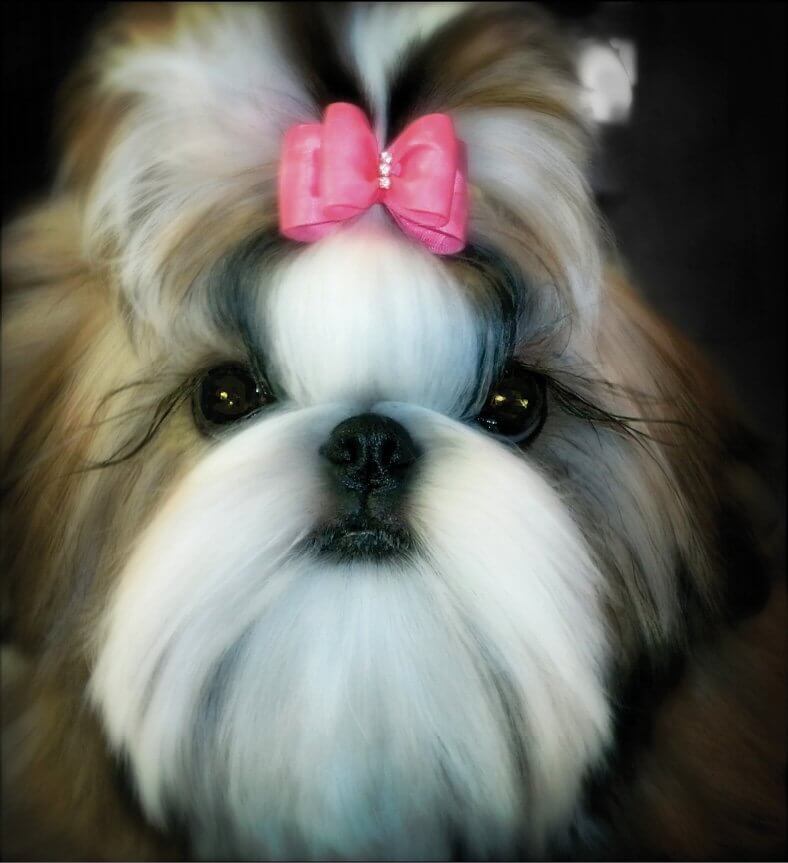
Although the origin of the Shih Tzu is shrouded in mystery, it is probably mostly of Tibetan origin. Along with such breeds as the Lhasa Apso, Tibetan Terrier, and Tibetan Spaniel, it is one of a group of small, shaggy Oriental breeds classified as “lion dogs” and considered sacred in Buddhism. Once such dogs were sent as gifts to the ruling Chinese emperors in Beijing, they were likely crossed with other Chinese breeds such as the Pekingese, Pug, and Japanese Chin. The Shih Tzu was developed as a distinctive breed mostly in the court of the Chinese dowager empress Cixi (T’zu Hsi). After Cixi’s death in 1908, breeding became more haphazard. Because the breed was associated with the royal court, it is believed to have become extinct in China after the 1949 Communist Revolution. Therefore, all modern Shih Tzu are descended from just seven dogs and seven bitches; three of which were imported into Norway by diplomats stationed in China, a fourth into Sweden, and six into Great Britain. Only one of these was actually bred in the royal palace. The final foundation dog was a black and white Pekingese deliberately crossed with a Shih Tzu in 1952 by a British breeder, to reduce size and length of leg and improve pigment. Until 1952, Shih Tzu and Lhasa Apsos were considered the same breed by the AKC and the Canadian Kennel Club. The Shih Tzu did not receive full AKC recognition as a separate breed until 1969. After that time, its popularity exploded.
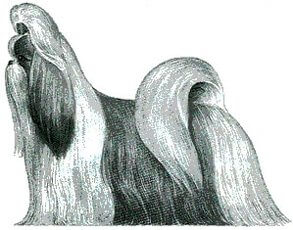
Throughout history, the breed’s sole purpose has been to serve as a companion dog. The wide variety of colors and markings found in Shih Tzu, all of which are to be considered equally, are probably in part the result of court eunuchs breeding the dogs to match the colors of the gowns of the ladies of the court. Shih Tzu temperament has always been friendly and outgoing. A well-bred Shih Tzu rarely meets a person he does not like, or a situation he cannot handle. In fact, he is likely to give a burglar a guided tour! In the show ring, a Shih Tzu should move smoothly and proudly around the ring, with adistinctly arrogant carriage. Without being raced or strung up, he should naturally hold his head high, and his teacup-handle tail (probably wagging) should be curved well-over his level topline.
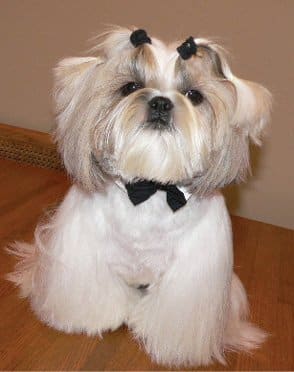
One of the most distinctive features of the Shih Tzu is its head. While Shih Tzu should be of sound structure, as should any dog, it is the complex collection of recessives that create the head and expression that distinguishes this from all other breeds. The head should be round, like a softball. The wide-set eyes should be large, full, round, dark, and expressive. The short, broad, well-cushioned, square muzzle should be set no lower than the bottom of the eye rim, and the lower jaw should be strong and broad. There is a deep stop. In the show ring, judges should be sure to look beyond the elaborate grooming to be sure that the head underneath is correct. At home, the affectionate warmth in your Shih Tzu’s expression will melt your heart. It can also, of course, be a way for your dog to convince you that it is simply too sweet and charming to be forced to do something it doesn’t want to do or be punished for a misdeed!
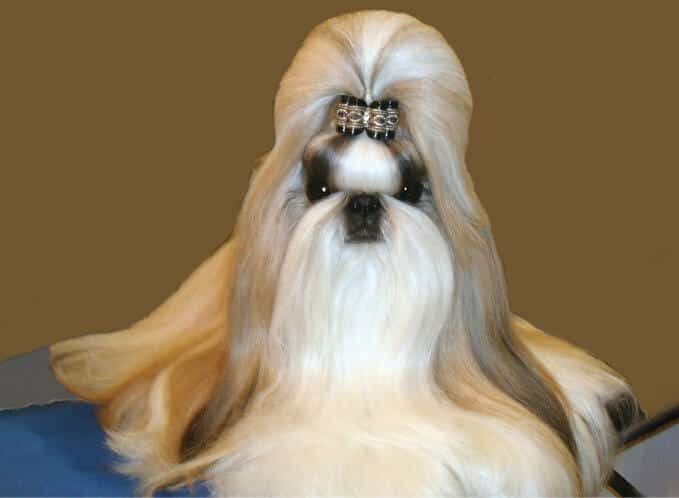
As befits its royal ancestry, the Shih Tzu can sometimes be stubbornly independent. This can make training a challenge. With this breed, you will find that praise works far better than harsh discipline. Anytime your dog is doing what you want, praise him profusely… pretty soon he’ll think the behavior was his own idea and delight in pleasing you with his cleverness! If your dog is on the floor and misbehaving (barking, jumping up and such), simply turn your back and ignore him rather than give him the attention he is seeking. Because Shih Tzu love people, they consider being ignored the cruelest punishment of all.
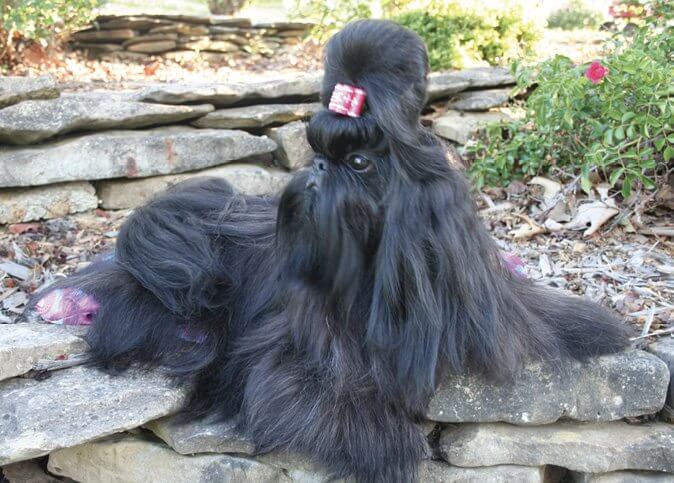
One of the things all Shih Tzu require is regular grooming. Whether you keep your Shih Tzu in gorgeous long coat or in a cute pet clip, whether you use a professional groomer or do it yourself, all Shih Tzu should be brushed and combed daily, checking eyes and ears, and rears in particular, for anyproblems. Remember that small mats that are easily removed can quickly become large ones if ignored, that dirty coats mat more quickly than clean ones, and that bathing a matted dog sets in the mats like concrete. When training your dog for grooming, don’t put him down on the floor when he is misbehaving. Instead, take things in small increments, with lots of pauses for petting and praise (and maybe even bits of kibble). Release him only when he is calm and cooperative.
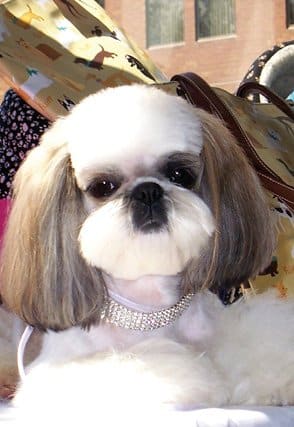
Training this breed for Obedience can be frustrating, because Shih Tzu are real hams. They are likely to wander off to greet people at ringside, flip over on their backs while wagging their entire bodies when told to “down,” and otherwise add crowd-pleasing enhancements to their routines. Performance activities are a great way for you and your dog to bond, and training is well worth the effort. Shih Tzu, like all dogs, should learn the commands “come,” “sit,” “down,” “leave it,” and “stay,” at the very least for their own protection. Shih Tzu, being even-tempered and affectionate, also make good therapy dogs.
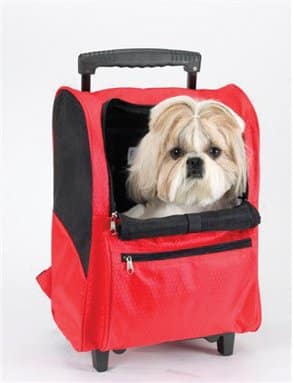
Without question, Shih Tzu are people dogs. Longtime Shih Tzu breeders often joke that they are like potato chips—you can’t have just one. This is such an easy breed to live with. There are few sex differences. In fact, most people think that male Shih Tzu are more affectionate than females; the latter seem to take all of the attention for granted rather than actively seeking it out. Shih Tzu of all ages love to be near you, and puppies are so underfoot that you have to be very careful not to trip over them. (A Tip: Slide your feet along the ground and sit on the floor to play with them.) Your Shih Tzu will always be ready for a brisk walk or a game of fetch or a snuggle. At the same time, he will be just as happy to curl up quietly at (or on) your feet when you are busy. And don’t even think of not letting him share your bed! Shih Tzu get along well with children of all ages and other dogs of all sizes and shapes, and are as content to live in a small city apartment as in the country. If you do not have an enclosed yard, or have an unpredictable schedule, you can train your Shih Tzu to eliminate on paper. This is particularly useful when it is snowing or pouring rain! Age, sex, and color should notinfluence your decision on which Shih Tzu joins your family. Evaluate the individual dog and take the advice of your breeder. Older dogs usually adapt as quickly as puppies to new, loving homes.
To learn more about all aspects of owning or judging this sturdy, happy breed, or how to locate a responsible breeder, go to the American Shih Tzu Club website, www.americanshihtzuclub.org. And Welcome to the Wonderful World of Shih Tzu!
The Shih Tzu in Brief
By Jo Ann White



